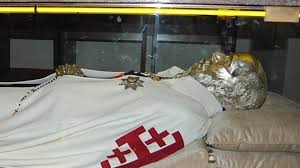Pope Leo XIV has officially declared Bartolo Longo, along with six others, as new saints of the Catholic Church.
Born in 1841 in Latiano, Italy, Longo was trained as a lawyer. Following the death of his father, he became involved in occult practices and reportedly served as a Satanic priest, engaging in extreme fasting and allegedly making a pact with a demon. However, he later renounced those practices and was guided back to the Catholic faith through the influence of Professor Vincenzo Pepe.
After his conversion, Longo took a vow of celibacy and dedicated his life to charity and service. He founded the Pontifical Shrine of the Blessed Virgin of the Rosary of Pompeii, an orphanage for girls in 1887, and an institute for the sons of prisoners in 1892. In 1922, he also established an institute for the daughters of prisoners and volunteered for two years at the Neapolitan Hospital for Incurables.
Longo passed away in 1926 and is remembered for his remarkable transformation from a life of darkness to one of deep faith and compassion. His devotion and charitable works ultimately led to his canonization.
He was declared a saint alongside six others — including three nuns, a Venezuelan “doctor of the poor,” and an archbishop martyred during the Armenian genocide.
During the canonization ceremony on October 19, Pope Leo said:
“Today we have before us seven witnesses — the new Saints — who, with God’s grace, kept the lamp of faith burning. May their intercession assist us in our trials, and their example inspire us in our shared vocation to holiness.”
By 1871, Longo had become a Third Order Dominican and worked tirelessly to rekindle faith among the people of Pompeii. He later received a portrait of Our Lady of the Rosary, and according to the Catholic News Agency, miraculous events soon followed.
On the day the portrait was first unveiled, a 12-year-old girl suffering from “incurable” epileptic seizures was reportedly “completely healed.”
Archbishop Tommaso Caputo of Pompeii told EWTN about the saint’s journey:
“Longo arrived in Pompeii to take care of the properties of the countess, and while walking through those streets — dangerous because of bandits and malaria — he felt an inner inspiration.”




